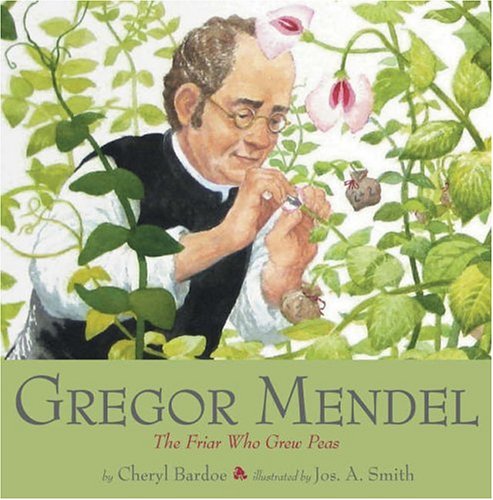
I could probably spend the entire day writing about Mendel and/or the history of science. Suffice it to say, however, that Gregor (who advanced to the rank of Abbot) brought us the broad concept of dominant and recessive traits. He practiced a beneficent form of hybridization before 'GMO' became a dirty word. And let's bear in mind that he was working with garden-variety edible peas, whose blossoms only come in white and a pinkish purple.
What I want to write about today is the history of my recent attempts to grow sweet peas in a controlled range of colors.
On January 15, 2010, in the earliest days of this blog, I said:
. . . three small plantings of annual sweet peas are in various stages of development. The ones from the nursery have reached their promised five feet (they're a dwarf variety) so are sticking up above the top of the four-foot chain-link fence. The ones planted from seed are close to two feet tall, and the ones from the farmer's market are about eight inches tall and just beginning to reach out for the fence.Well, I had certainly forgotten ever buying any sweet pea plants, but I clearly remember that the seed packet promised "mixed" colors and I suspect that the plants I bought were the same. "Mixed," in fact, was what I got, including the white ones I really love best and the dark purple ones that become the focal point of any bouquet.
The following year, on April 11, 2011, I reported on volunteer sweet peas coming up as early as the previous November. These I had moved to stand next to the chain-link fence, interspersing them with seeds saved from 2011's "mixed" crop, plus seeds of a "Blue Celeste" variety that I was really anxious to see in bloom. No way:
Right now I have a bouquet of sweet peas on my desk -- twenty or so dark purple with ONE light pink. Moreover the purple ones have longer stems and larger blossoms, and about half of them are from the volunteer plant that bloomed in November.Whereas 2011's Sweet Pea Report was titled a plethora of purple, 2012's showed up on April 20 as paltry in pink. 2012 was the first year I went for an all-volunteer sweet pea crop, and here's what it looked like:
Now that April is more than half over, the volunteer sweet peas along the fence have barely started to bloom. They're pale pink, with short stems, and the vines are less than two feet tall. Nary a one of the sprawling sweet peas in the front garden has managed to bloom, but some are reaching over a foot long, so I haven't exactly given up hope.After diligently mulching with spent sweet pea vines in the summer of 2012, I went into my second year of all-volunteer sweet pea culture, and as the seedlings came up I let them stand where they had chosen to sprout. Many, as reported on February 18, were in our infamous parking strip. Like this:
In the photo on the left, you can see the gray pavement of the curb running diagonally from right to left. And on the right, Steve's car is visible at curbside. The red-and-purple flower, I swear, was not in the original "mixed" seed packet. It looks like something to wear at a Red Hat Society event.
These long-stemmed blossoms have appeared on dense foliage topping out at around three feet. The 'bushes' would have been taller if I had provided taller supports. I have picked only three or four bouquets over the season. I'm purposely letting them go to seed, and looking forward to 2014's range of colors.
Will I ever grow a white sweet pea? Time will tell. Like blue eyes, white sweet peas must be a recessive trait. And I'm beginning to suspect the alleged pale blue sweet peas of being GMO's. Not in my front yard, Mr. Monsanto!
- - - - -
* Years ago, I ended a poem about plant name idolatry with this line: "Kyrie eleison, Christe eleison, Linneaus eleison."
